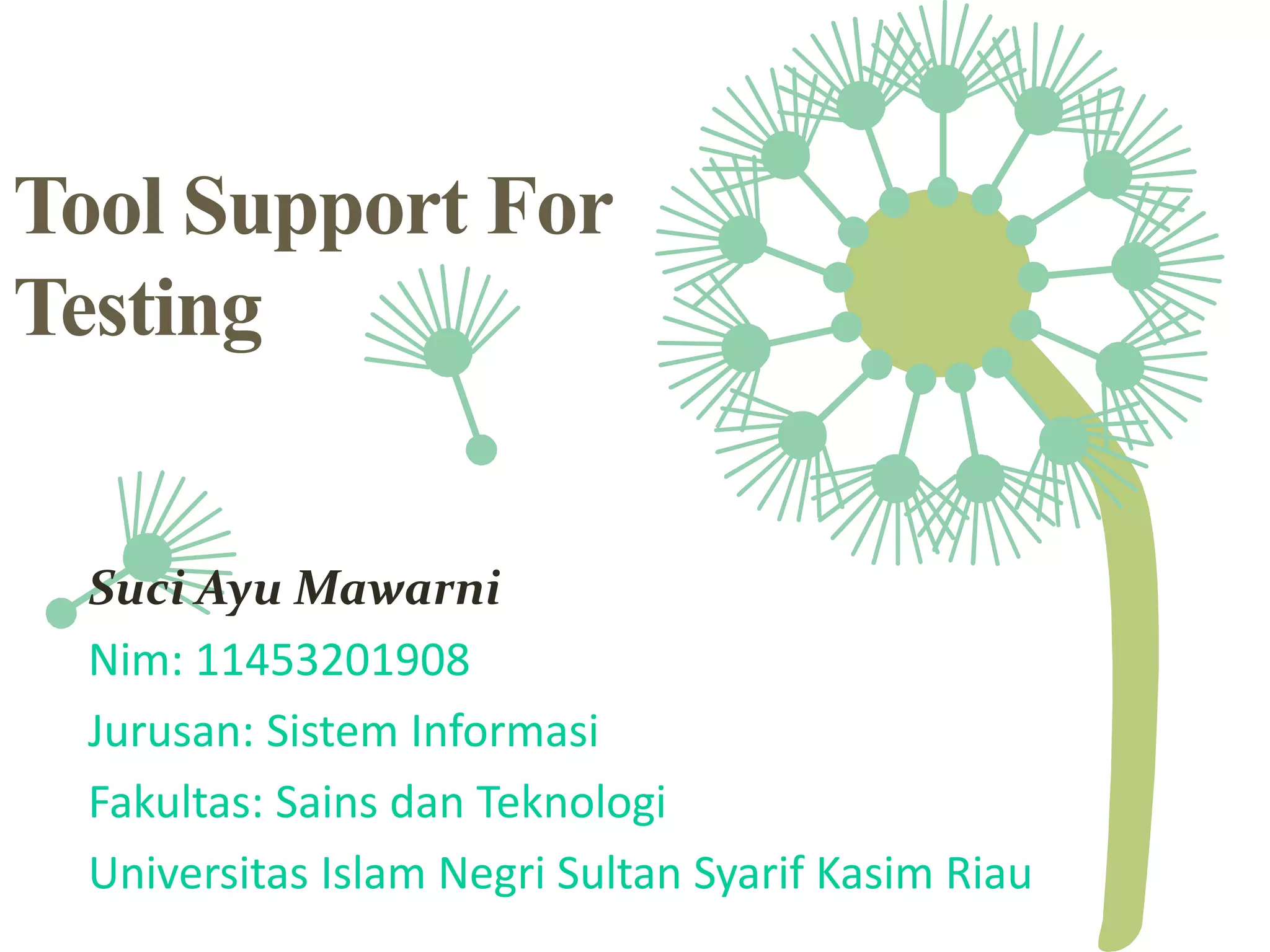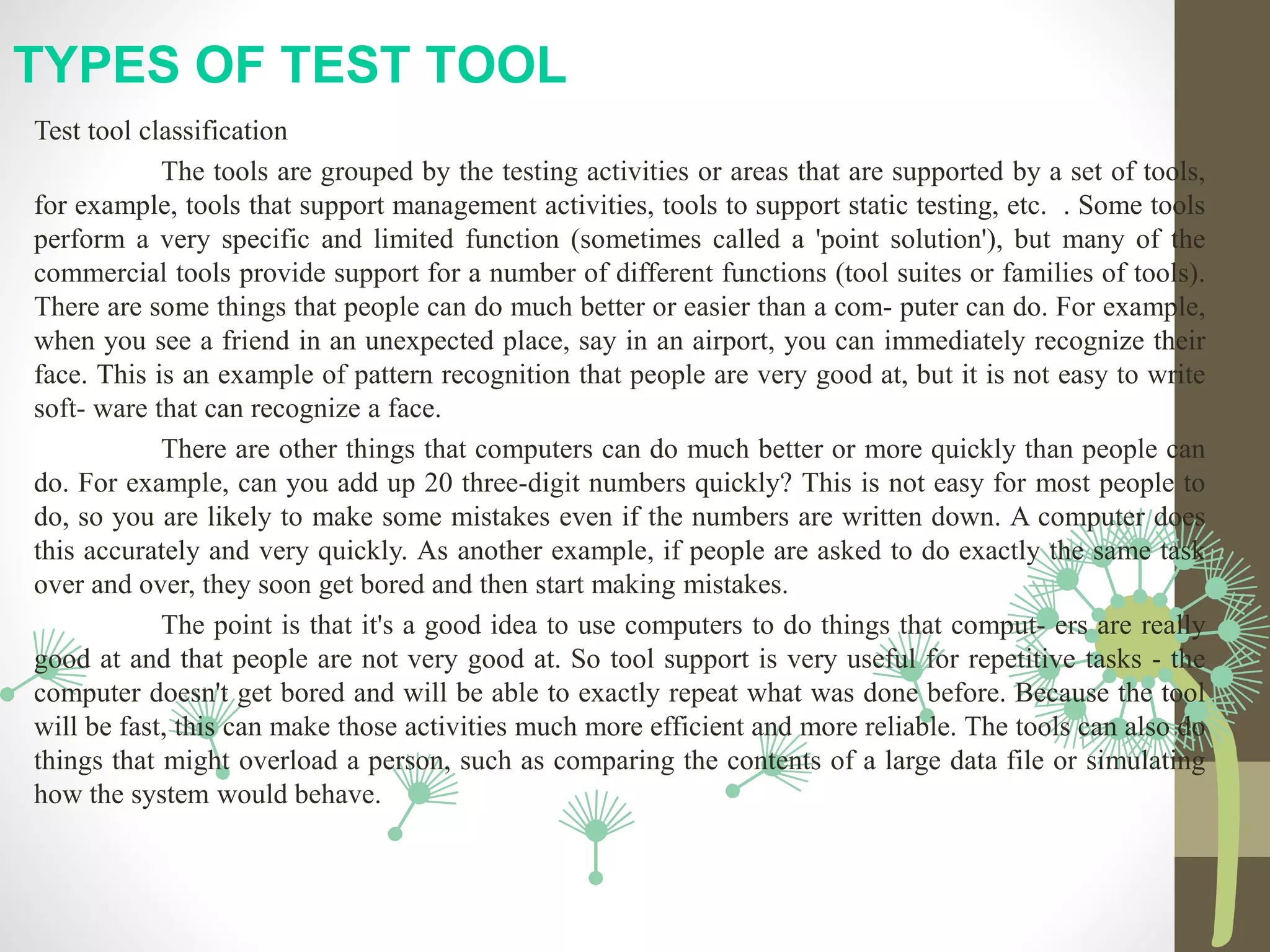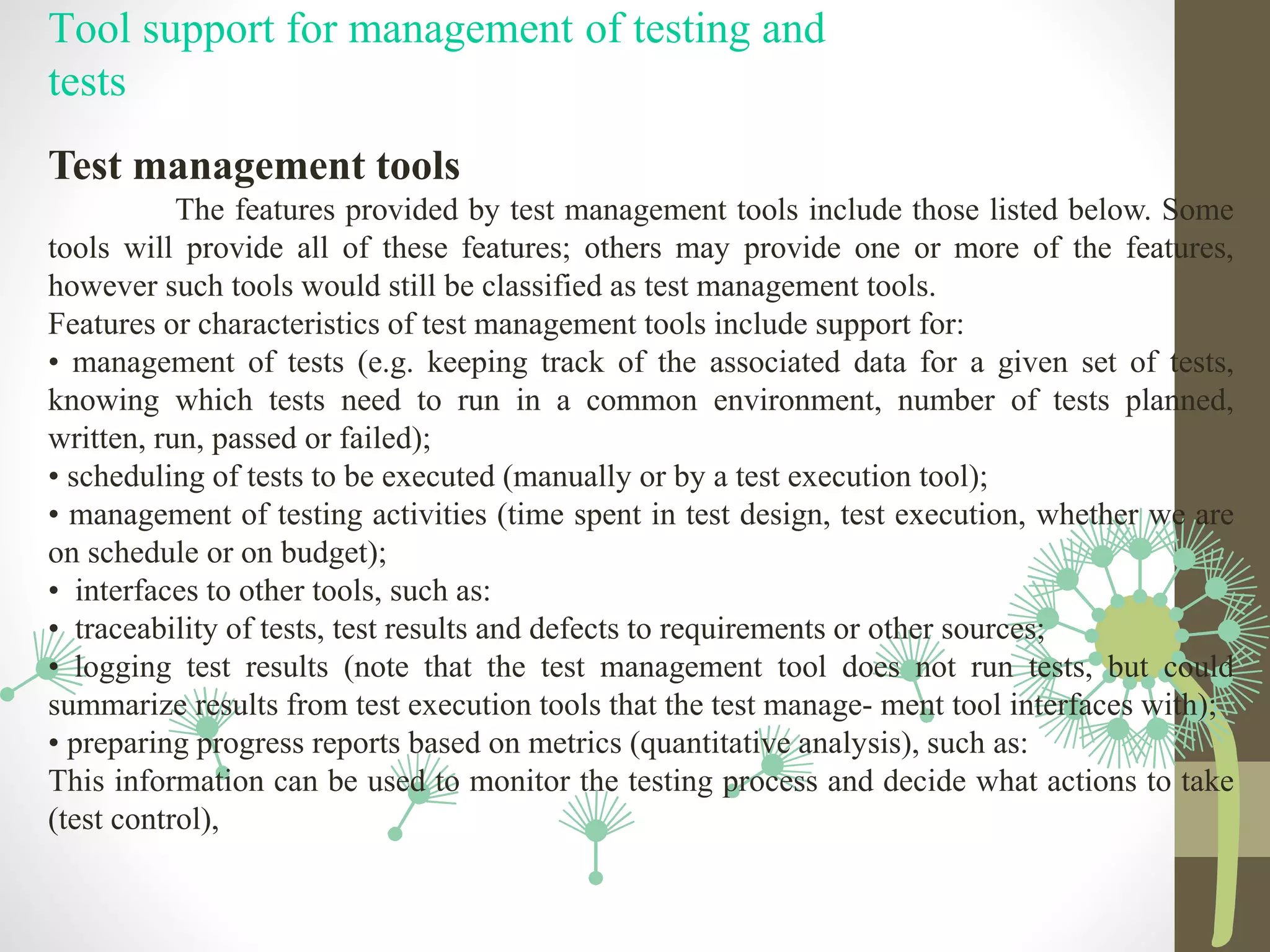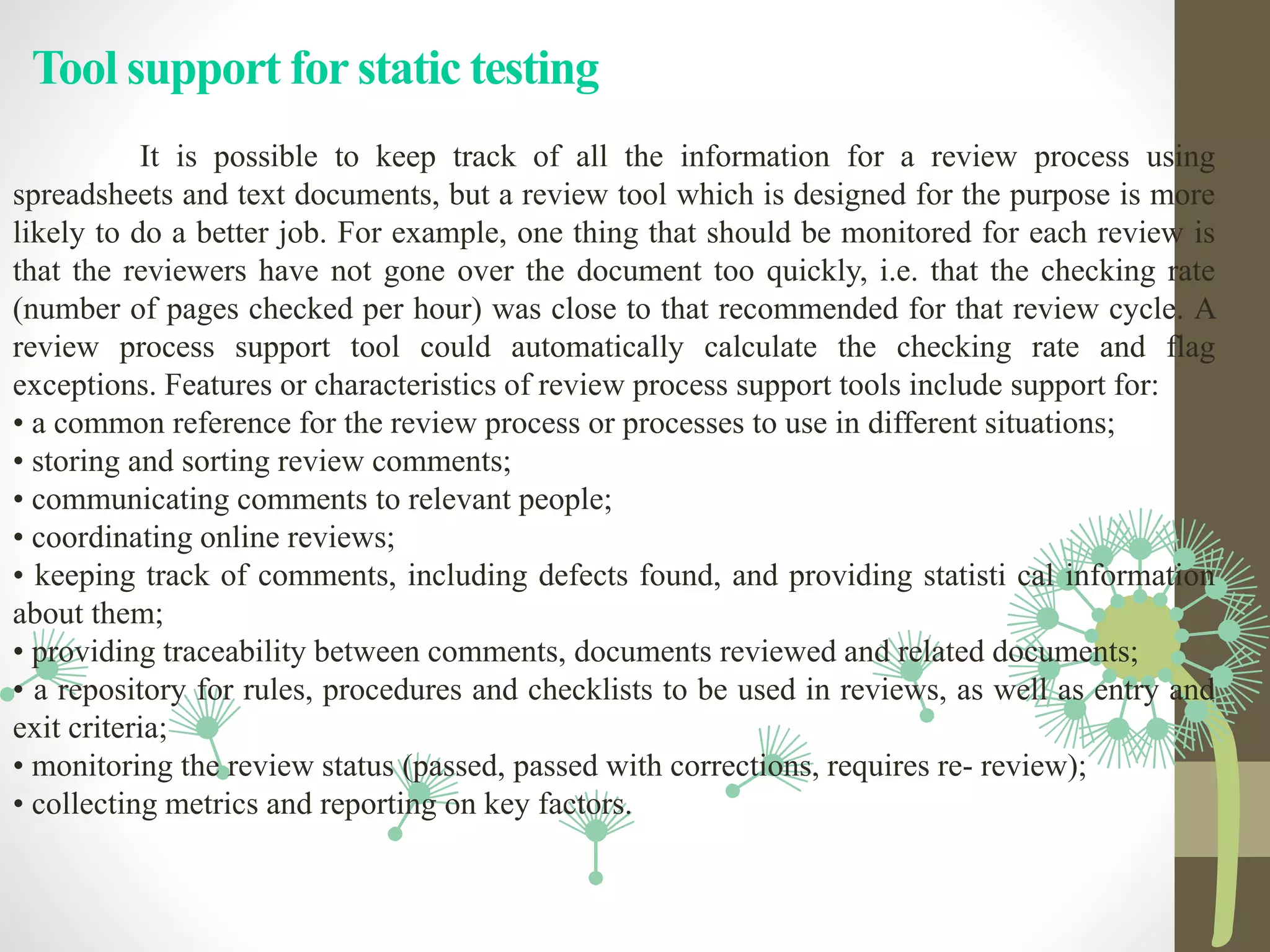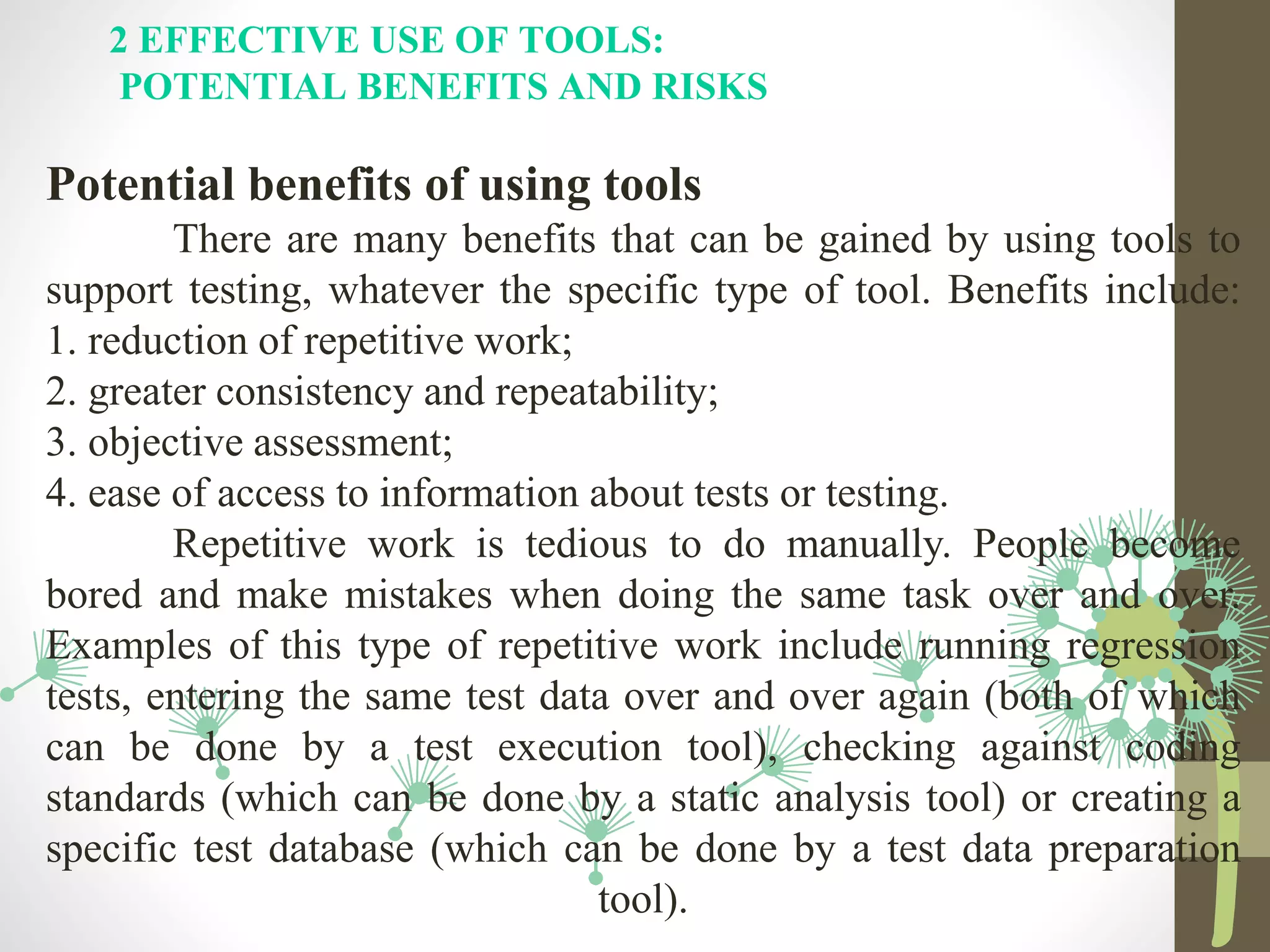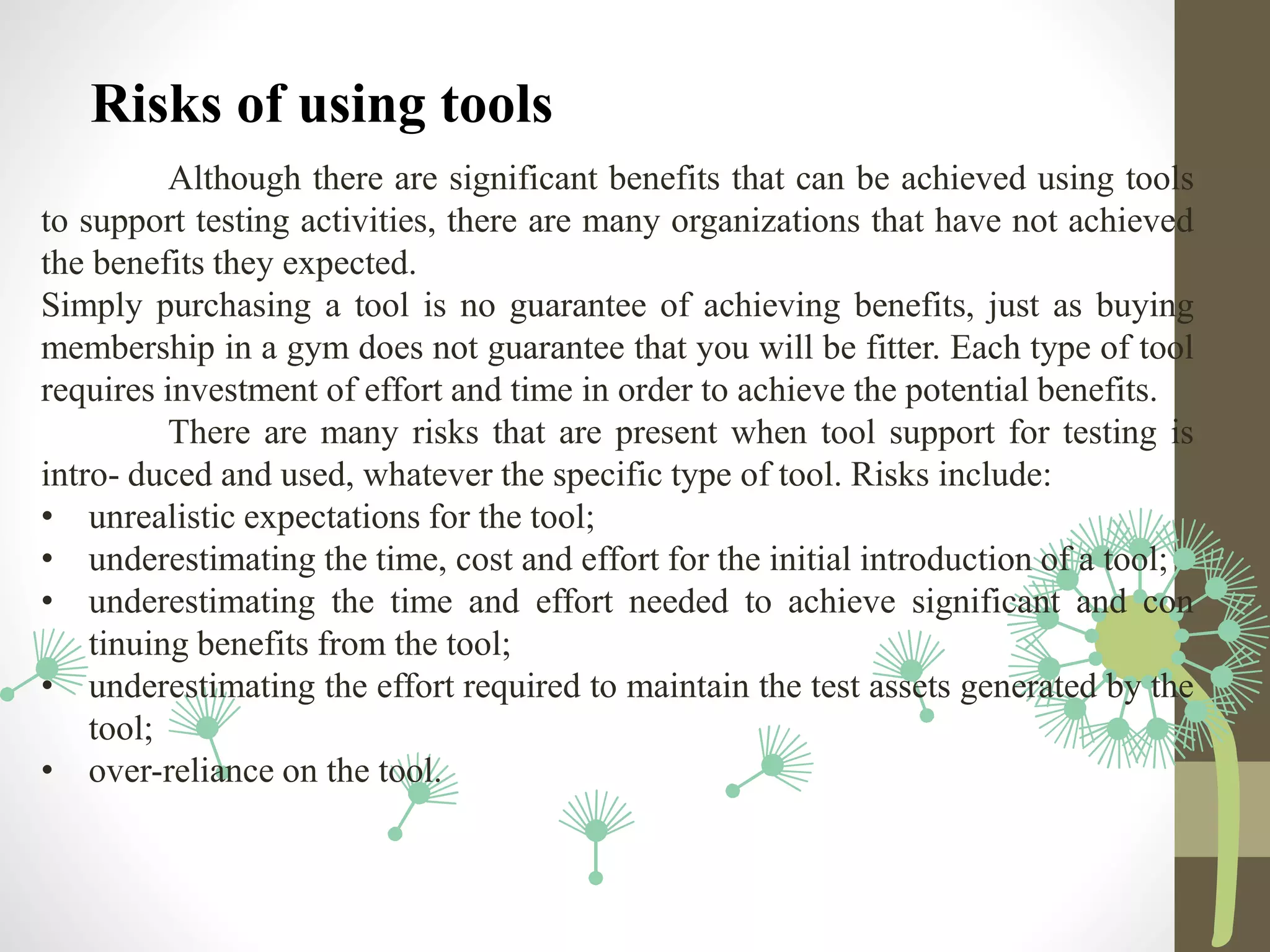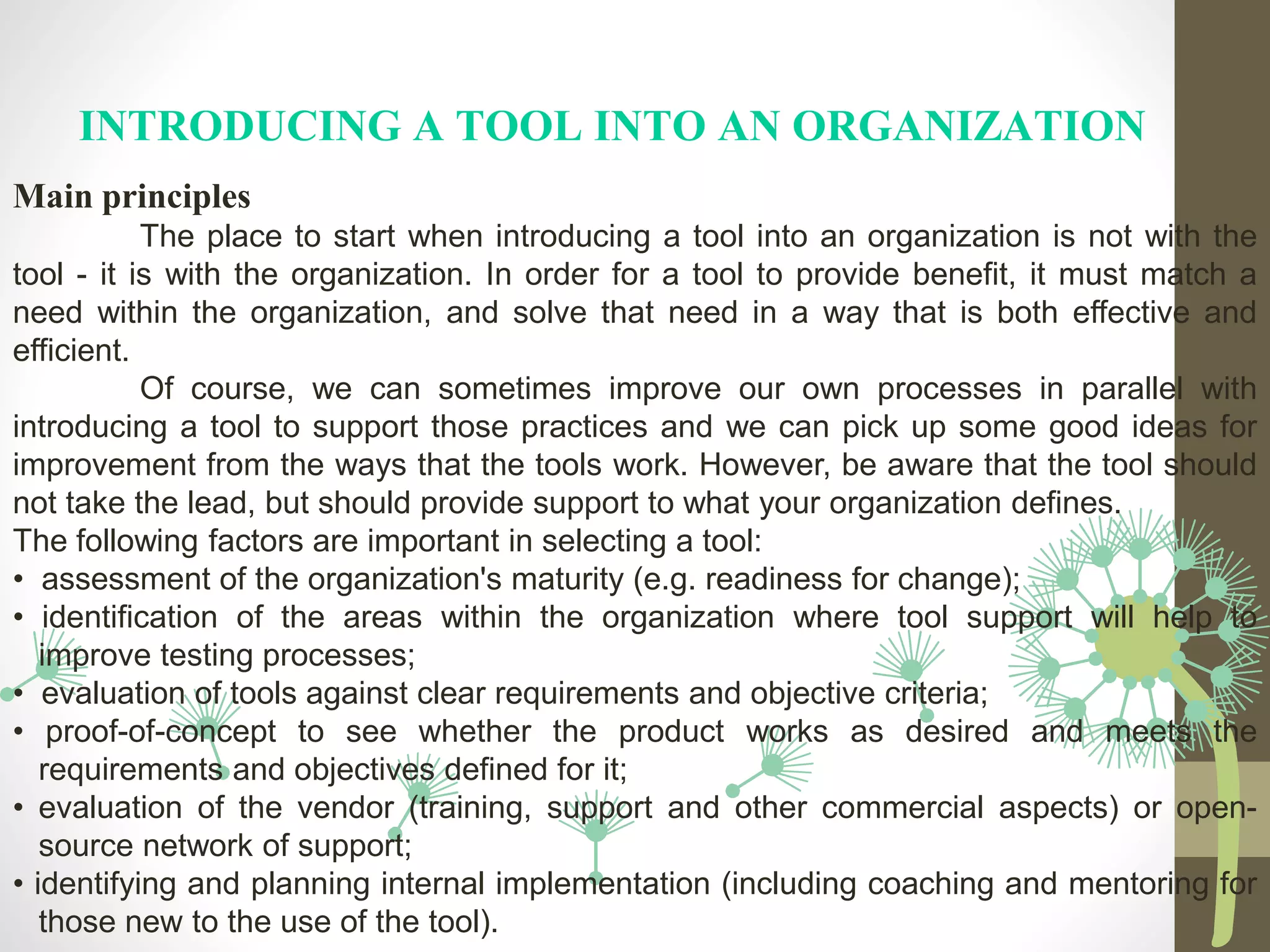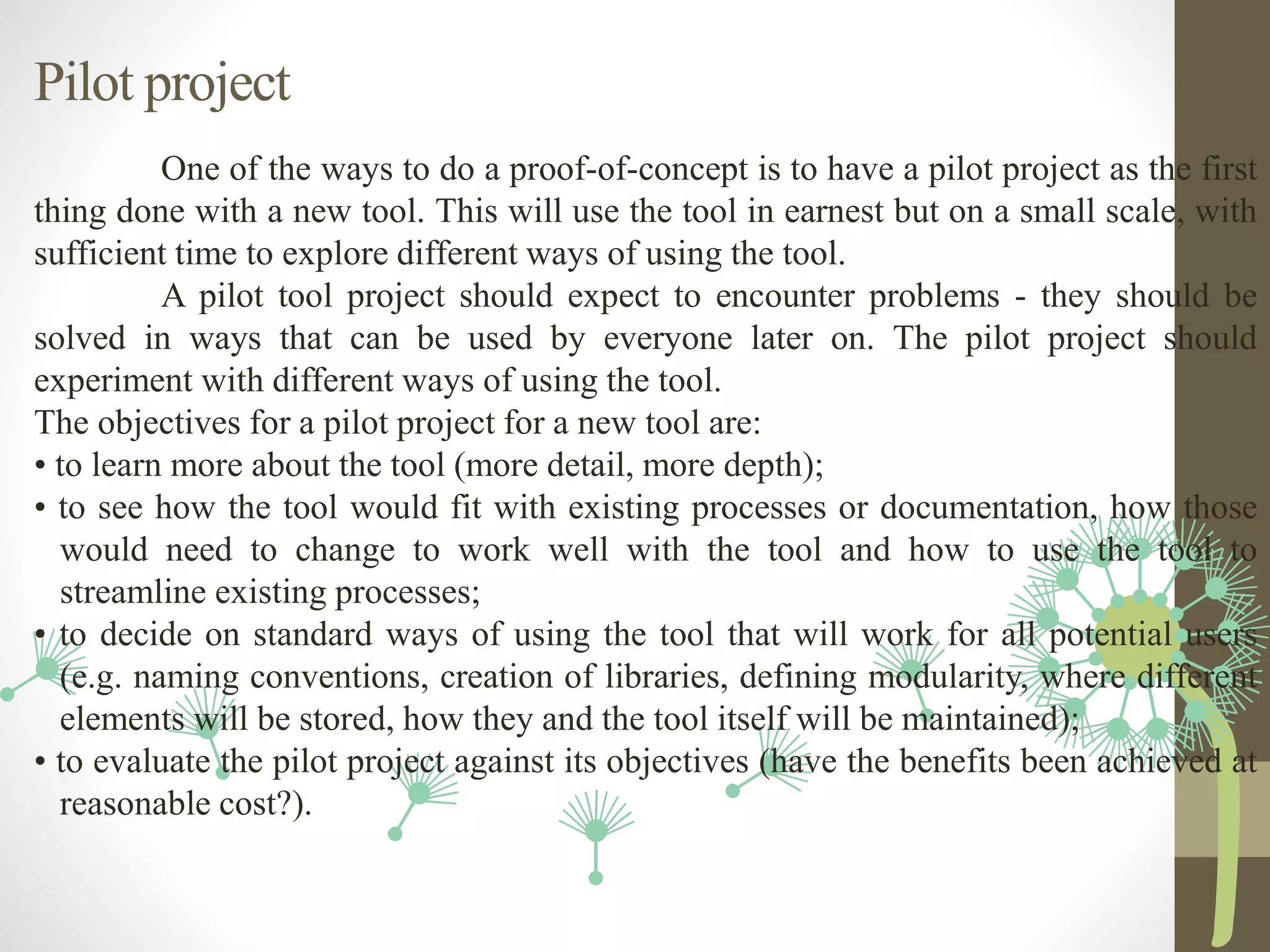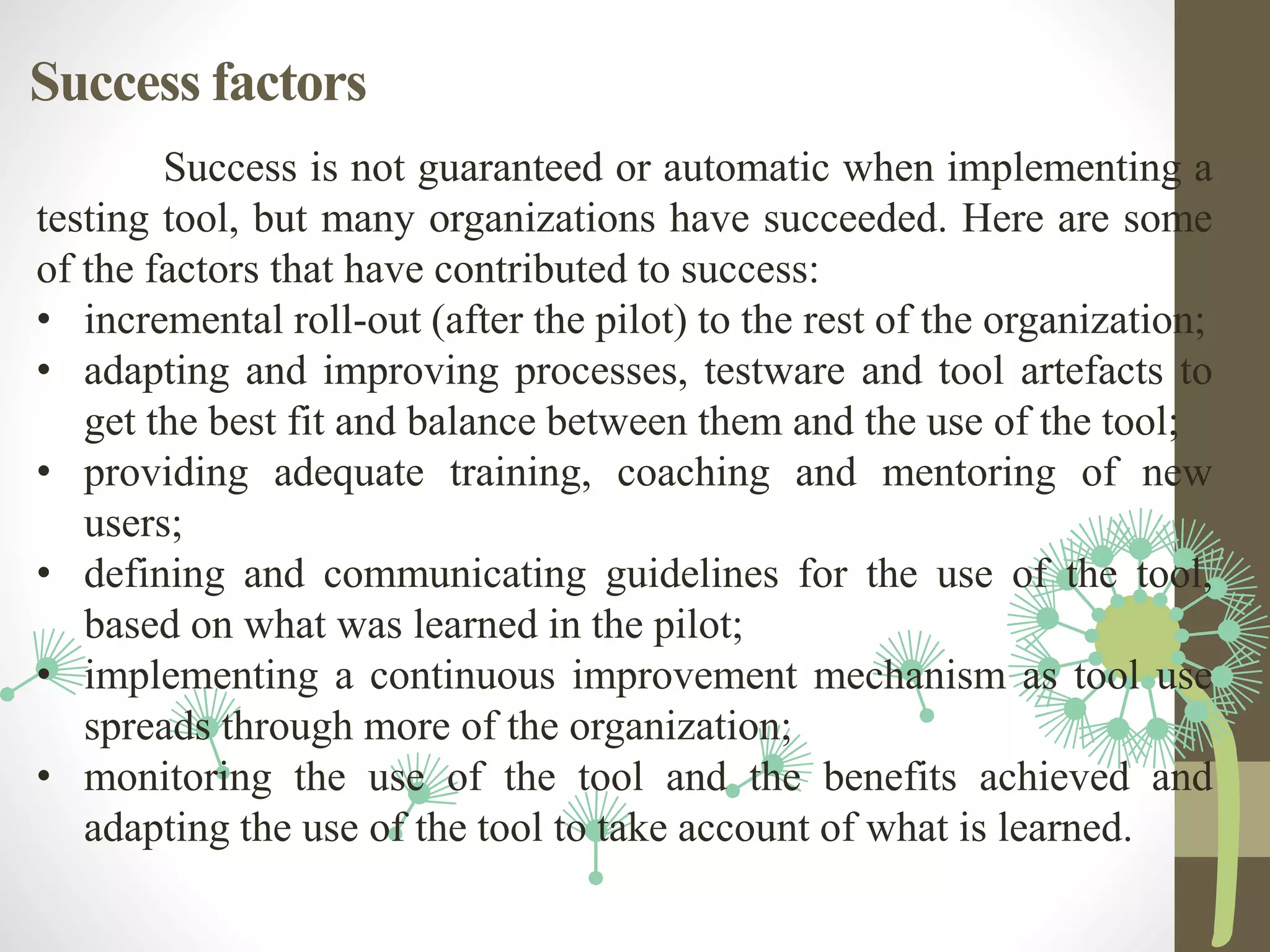Tool support can benefit testing by automating repetitive tasks and increasing consistency. However, simply purchasing a tool does not guarantee benefits - tools must be properly introduced. A pilot project allows an organization to experiment with a new tool on a small scale before wider rollout. Success requires adapting processes to fit the tool, providing training, and continuously improving tool use.
